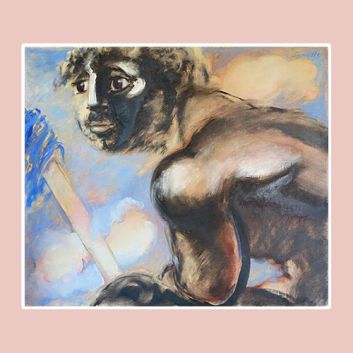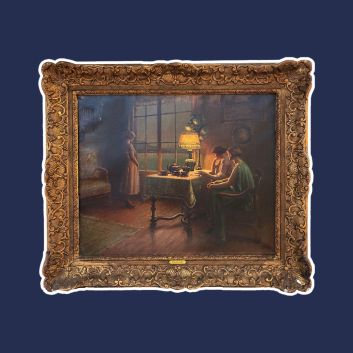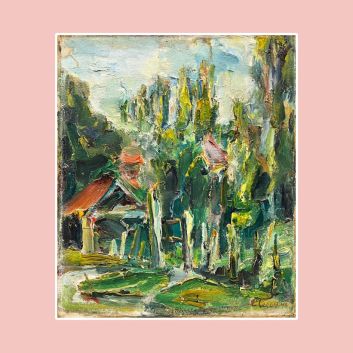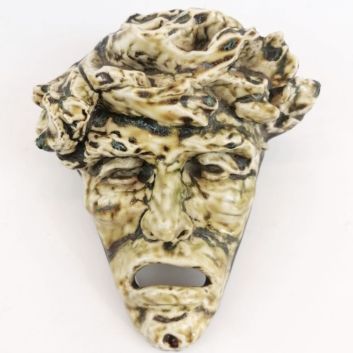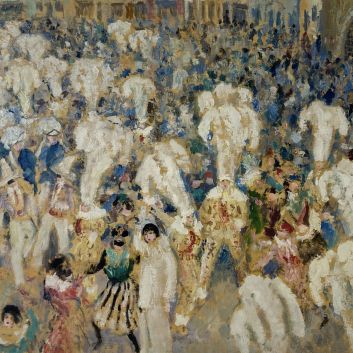Cote et valeur des tableaux, dessins, peintures de James Ensor
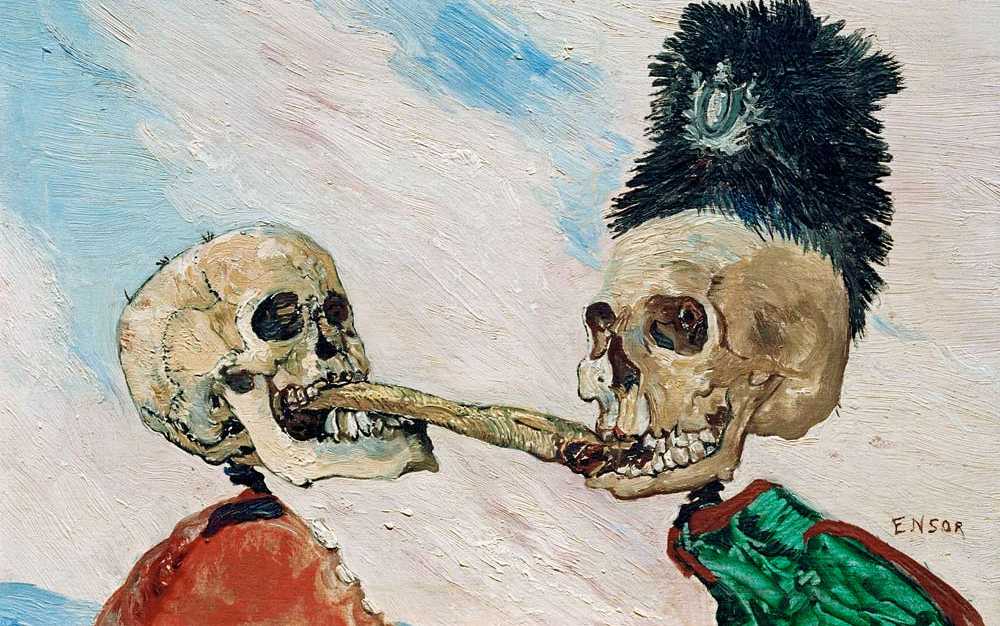
Si vous détenez une œuvre réalisée par l’artiste James Ensor ou d’après son travail et que vous souhaitez connaître sa valeur, nos experts et commissaires-priseurs agréés par l’État vous aiguilleront.
Nos spécialistes réaliseront une expertise gratuite de votre œuvre, et vous transmettront une estimation précise de sa valeur sur le marché actuel.
Par la suite, si vous désirez vendre votre œuvre, nous vous orienterons vers le meilleur dispositif possible pour en obtenir un prix optimal.
Cote et valeur de l’artiste
Sur le marché des enchères, les œuvres de James Ensor sont peu courantes et assez prisées par les collectionneurs.
Les œuvres les plus recherchées sont les huiles sur toiles, le prix auquel elles se vendent sur le marché des enchères s’échelonne entre 10 et 6 400 000€, un delta conséquent mais qui en dit long sur la valeur qui peut être attribuée aux œuvres de l’artiste.
Ainsi, un tableau signé Ensor peut atteindre des millions d’euros en salle des ventes comme en témoigne sa peinture Squelettes arrêtant masques, datant de 1891, adjugée 6 400 000 € en 2016 tandis qu’elle était estimée entre 1 000 000 et 1 500 000€.
Ordre de valeur allant du plus basique au plus prestigieux
Technique utilisée | Résultat |
|---|---|
Estampe - multiple | De 10 à 227 630€ |
Dessin - aquarelle | De 250 à 791 860€ |
Huile sur toile | De 10 à 6 400 000€ |
Réponse en - de 24h
Style et technique de l’artiste
Le Baron Ensor est à l’origine d’une œuvre très imprégnée par le symbolisme, presque à l’avant-garde puisque l’artiste utilise des iconographies et des procédés qui resteront d’actualité longtemps après lui.
Ses compositions se caractérisent par des expérimentations permanentes sur l’agencement de l’espace, la colorimétrie ainsi que la portée et la signification du thème représenté.
Chaque composition semble orchestrée pour capturer l'œil et l'esprit, mêlant harmonie et chaos avec une précision qui frappe le spectateur. Les crânes et les masques sont des programmes iconographiques très récurrents dans ses tableaux.
Les éléments allégoriques y occupent une place centrale, parfois grotesques, souvent empreints de mystère et d'émotions intenses.
Ensor explore avec virtuosité les contrastes lumineux, notamment en accentuant les clairs-obscurs, ce qui renforce l’ambiance parfois étrange, voire macabre, de ses toiles. Bien qu'il soit surtout reconnu pour ses huiles sur toile, il ne se limite pas à ce médium.
Son œuvre témoigne également d’une grande maîtrise du dessin et de l’estampe, des techniques qu'il utilise pour affiner ses idées et développer des thèmes récurrents dans son travail.
Ce souci du détail et cette exploration de la lumière font de ses créations des pièces uniques, à la frontière entre réalisme et surréalisme, propices à une introspection émotionnelle.
La vie de James Ensor
James Sidney Édouard, baron Ensor (1860-1949), figure incontournable du symbolisme et de l’orientalisme belge, a mené une carrière artistique marquée par l'originalité et l'avant-garde.
Né à Ostende dans une famille bourgeoise, Ensor grandit au sein d’un environnement assez particulier qui influencera profondément son œuvre.
Sa mère, propriétaire d'un magasin de costumes, jouera un rôle décisif dans son imaginaire visuel, les masques et déguisements devenant des motifs récurrents dans ses tableaux, souvent associés à des critiques sociales ou des représentations de la vanité humaine.
Formé dès l'âge de quinze ans, Ensor entre à l'Académie des Beaux-Arts de Bruxelles, où il se confronte aux dogmes académiques, qu'il rejette rapidement. En 1880, il quitte l'Académie avec fracas, la qualifiant de « boîte à myopes », préférant s'engager dans des voies plus novatrices.
De retour à Ostende, il se replie dans l’atelier familial et commence à peindre des portraits et des scènes réalistes, tout en évoluant progressivement vers le pointillisme et le symbolisme, rejoignant la veine artistique de Nikolai Sapunov, Odilon Redon ou encore Alphonse Osbert.
C’est durant cette période qu’il cofonde le groupe des XX, un collectif d’artistes d’avant-garde en rupture avec les normes académiques, prônant une liberté totale dans la création artistique.
La reconnaissance tardive de son génie par la critique et le public n'interviendra qu'au début du XXe siècle. À partir de ce moment, il expose à l'international et reçoit de nombreux honneurs, culminant en 1929, lorsqu'il est anobli et fait baron par le roi des Belges.
Paradoxalement, Ensor réagira mal à cette reconnaissance croissante. Peu à l’aise avec la célébrité, il se détourne peu à peu de la peinture pour se consacrer à la musique contemporaine, une autre de ses passions. Il meurt dans sa ville natale d’Ostende en 1949, laissant derrière lui une œuvre puissante, fascinante et profondément novatrice, qui continue d’influencer les artistes contemporains.
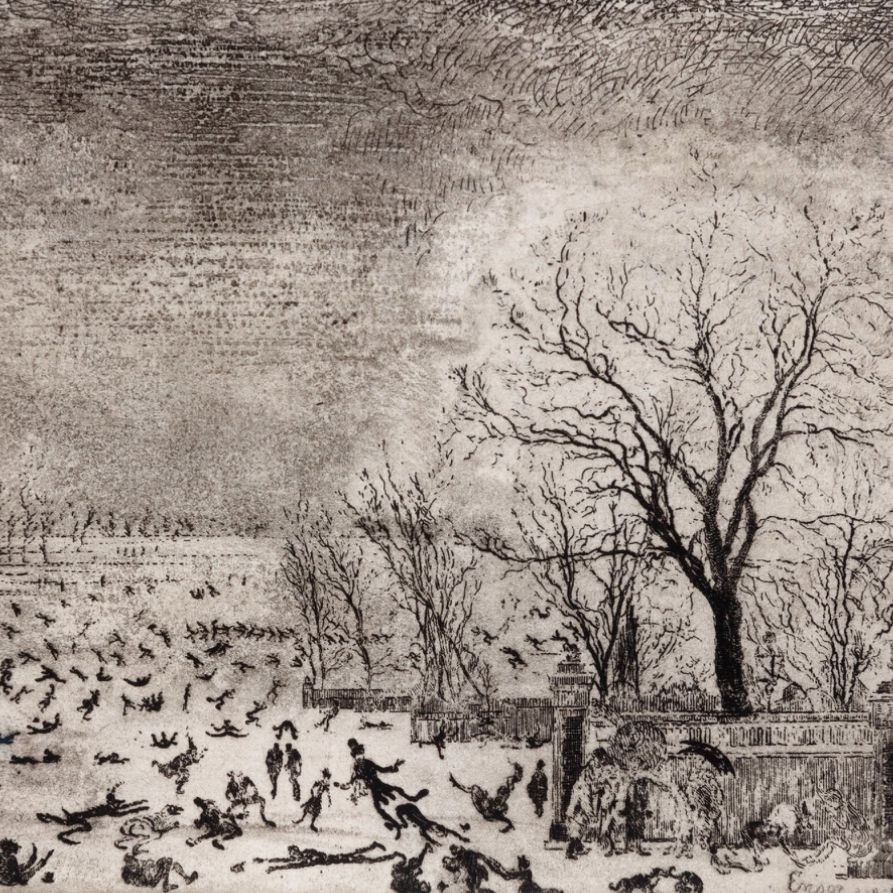
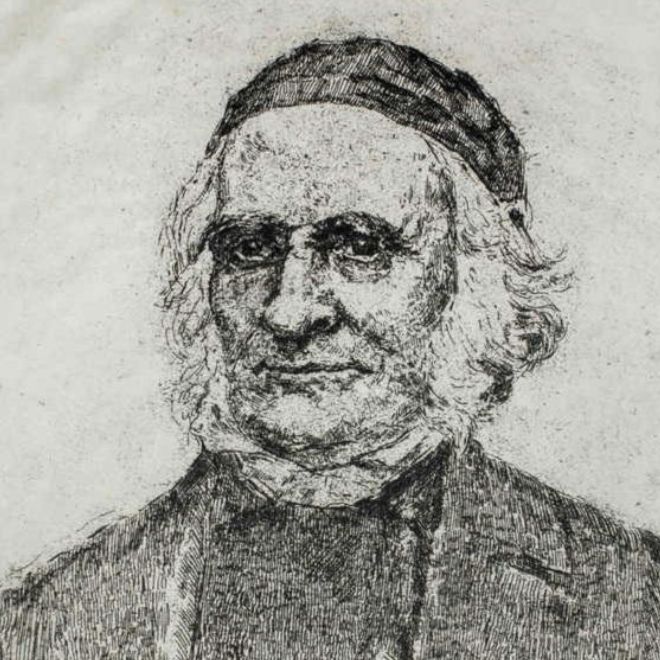
Focus sur le tableau en couverture de James Ensor
Dans cette œuvre singulière de James Ensor, on est immédiatement frappé par la confrontation étrange entre deux crânes, figés dans une sorte de duel silencieux. L’artiste joue ici avec les codes du grotesque et de l’allégorie, un style qu'il affectionne particulièrement.
Les crânes, symboles classiques de la vanité et de la mort, prennent une dimension presque théâtrale sous le pinceau d’Ensor. Ce face-à-face morbide nous rappelle la fragilité de la vie, mais avec une pointe d'ironie qui caractérise souvent ses tableaux.
La couleur occupe une place centrale dans la composition. Les tons des crânes sont subtils, déclinés dans des nuances de beige et d'ivoire qui se détachent délicatement sur le ciel bleu pâle. Le ciel, d'ailleurs, est traité avec des coups de pinceau visibles, donnant l’impression d’un mouvement léger, presque aérien.
En contraste, les uniformes rouges et verts des deux figures apportent une vivacité inattendue à une scène qui, par nature, est plutôt sombre. Cette opposition de couleurs contribue à créer un contraste visuel saisissant et à capturer l'attention du spectateur.
Ensor nous plonge ainsi dans une scène qui semble à la fois macabre et absurde, avec une touche d’humour noir. L'iconographie des crânes, ici détournée, reflète une méditation sur la mort, mais sans le sérieux traditionnel.
Le programme symbolique, bien qu'intense, est rendu plus accessible par la simplicité de la mise en scène et le choix de couleurs éclatantes. C’est cette légèreté dans le traitement de sujets profonds qui rend l'œuvre d'Ensor unique et captivante, à la croisée du symbolisme et de l’avant-garde.
James Ensor, L'homme derrière les masques
L’héritage de James Ensor
L’empreinte de James Ensor sur son époque est indéniable. Figure incontournable du symbolisme belge, il a su imposer son style unique, à la fois macabre, poétique et profondément critique.
Au début du XXe siècle, alors que l'avant-garde artistique est en pleine effervescence, Ensor se distingue par une production d'œuvres qui échappent aux conventions académiques de son temps.
Ses toiles, souvent provocantes, capturent l’essence même des préoccupations sociales et spirituelles de son époque, tout en repoussant les limites du symbolisme traditionnel. Il est l’un de ceux qui contribuent à élargir le champ du symbolisme, qui, en Belgique, prend une tournure très particulière, marquée par un usage récurrent de l'allégorie et de la satire.
Le symbolisme belge, dont Ensor est l’un des représentants majeurs, se caractérise par une fascination pour l’étrange, le mystique et le macabre. Dans ce contexte, les œuvres d’Ensor se distinguent par leur traitement à la fois audacieux et décalé de ces thèmes.
Là où d’autres artistes symbolistes explorent la beauté mystérieuse ou les visions spirituelles, Ensor choisit de se focaliser sur des représentations plus grotesques, critiquant les hypocrisies de la société, la vanité humaine et la peur de la mort.
Ses tableaux peuplés de masques, de squelettes et de figures carnavalesques sont devenus emblématiques de cette approche, où l’absurde côtoie l’allégorie.
Bien que largement reconnu dans son pays natal, c’est à l’étranger que la notoriété de James Ensor s’épanouit véritablement, notamment grâce aux collectionneurs américains et allemands qui, très tôt, s’intéressent à son œuvre.
Ses huiles sur toile, en particulier, trouvent un écho particulier sur ces marchés, où son style provocateur et sa maîtrise technique sont grandement appréciés. Les collectionneurs privés jouent ainsi un rôle clé dans la préservation de son œuvre, en particulier dans des pays où l’art avant-gardiste trouve un public réceptif.
Si certaines de ses œuvres sont conservées dans des musées en Belgique, comme à Ostende, d’autres circulent dans des collections privées, assurant ainsi la pérennité de son héritage artistique.
Grâce à ses compositions atypiques et à sa manière unique de traiter des thèmes universels, Ensor continue de marquer son époque, influençant les artistes contemporains et laissant une empreinte indélébile dans l’histoire de l’art moderne.
Sa signature
Les œuvres de James Ensor ne sont pas toutes signées.
Même s’il y existe des variantes, voici un premier exemple de sa signature :
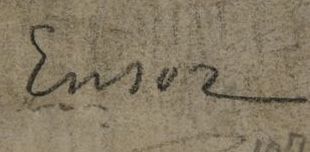
Expertiser votre bien
S’il s’avère que vous possédez une œuvre de James Ensor, demandez sans plus attendre une évaluation gratuite par le biais de notre formulaire sur notre site internet.
Un membre de notre équipe, composée d’experts et de commissaires-priseurs agréés, vous contactera promptement afin de vous communiquer l’estimation de la valeur de votre œuvre, sans oublier de vous transmettre les informations ad hoc sur celle-ci.
Si vous considérez vendre votre œuvre, vous serez également accompagnés par nos spécialistes afin de bénéficier d’alternatives pour la céder au meilleur prix possible.
Réponse en - de 24h
A découvrir dans la même thématique
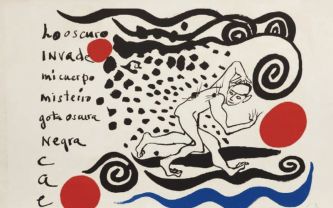
Cote et valeur des tableaux, dessins, lithographies de Alexa...
Alexander Calder est un artiste du XXème siècle américain qui a produit des peintures et autres oeuvres cotées et très prisées aux enchères.
En savoir plus >
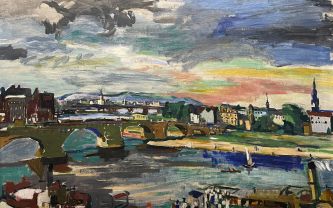
Cote et valeur des tableaux, dessins, peintures de Oskar Kok...
Oskar Kokoschka est un peintre expressionniste autrichien du XXème siècle qui a produit des œuvres dont la cote et la valeur sont élevées aux enchères
En savoir plus >
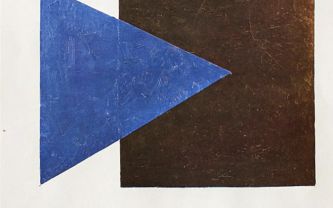
Cote et valeur des dessins et lithographies de Kasimir Malev...
Kasimir Malevitch est un peintre du suprématisme qui a produit des oeuvres dont la cote et la valeur sont très élevées aux enchères. Estimation 24h.
En savoir plus >
Site sécurisé, anonymat conservé
Commissaire-priseur et expert agréé par l'État
Estimations gratuites et certifiées
